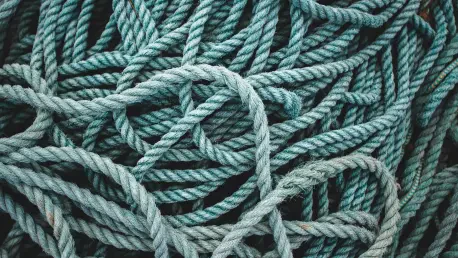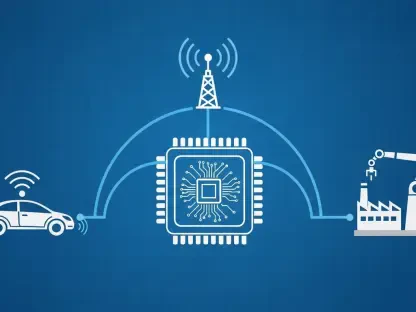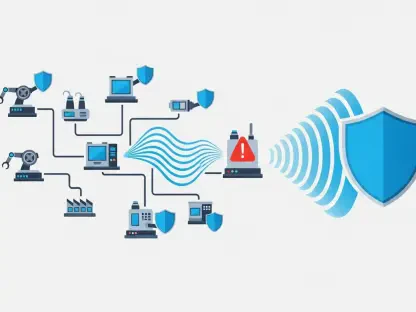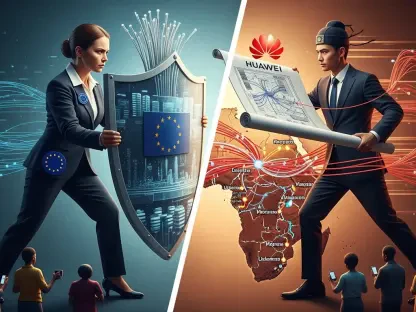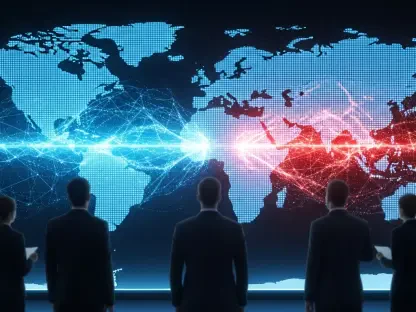Diving into the Depths of Digital Infrastructure
Imagine a world where over 95% of international data suddenly halts, crippling economies and severing critical communications, a scenario that isn’t a distant dystopia but a real risk tied to the vulnerability of submarine cables—the unseen lifelines of global connectivity. In 2025, Japan and India are stepping up with significant investments in cable-laying and maintenance ships, recognizing that securing these undersea networks is not just a technological need but a cornerstone of national security. This market analysis delves into the motivations behind these moves, examines current trends in the submarine cable industry, and forecasts the implications for global digital infrastructure. The stakes are high, and understanding this strategic pivot offers vital insights into the evolving landscape of digital sovereignty.
Unpacking Market Dynamics in Submarine Cable Infrastructure
Rising Demand Amidst Aging Fleets
The submarine cable market is at a critical juncture, driven by an insatiable demand for bandwidth fueled by cloud computing, 5G networks, and digital transformation across industries. These cables carry the bulk of global data, underpinning everything from financial transactions to military operations. However, a pressing concern looms large: a SubOptic Association report indicates that 47% of the current global fleet of cable ships is set to retire within the next 15 years. With new submarine systems projected to span 1.6 million kilometers—double the capacity being decommissioned—the gap between supply and demand for specialized vessels is widening. This scarcity poses risks to timely installation and repair, potentially disrupting internet reliability worldwide.
Geopolitical Stakes in Digital Connectivity
Beyond technical challenges, the market is increasingly shaped by geopolitical imperatives. Submarine cables are no longer just infrastructure; they are strategic assets in a contested digital arena. Nations are waking up to the risks of relying on foreign-controlled vessels or companies for laying and maintaining these networks. Cyber threats, espionage concerns, and the potential for deliberate disruptions have elevated the importance of sovereign control. This shift is evident in the actions of key players like Japan and India, whose investments signal a broader trend toward securing national interests in undersea connectivity. The market is thus witnessing a convergence of technology and statecraft, redefining competitive dynamics.
Economic and Operational Barriers
Despite growing recognition of these issues, the submarine cable ship market faces significant hurdles. Building specialized vessels is a costly endeavor, with each ship valued at around $300 million, and construction timelines often stretch over several years. Operational expertise is another bottleneck, as maintaining a skilled workforce for such niche tasks adds to expenses. Additionally, global shipbuilding capacity is strained, intensifying competition for resources. For countries entering this space, balancing economic constraints with strategic urgency remains a challenge, shaping investment decisions and market entry strategies in distinct ways.
Strategic Moves by Japan and India
Japan’s Bid for Cable-Laying Dominance
Japan is positioning itself as a formidable player in the cable-laying segment, leveraging its domestic giant, NEC, the nation’s only global fiber cable manufacturer. The government is exploring subsidies worth hundreds of millions of dollars to support the acquisition of transoceanic cable ships, potentially covering up to 50% of costs. Currently dependent on leased vessels, NEC faces a competitive disadvantage against industry leaders who own their fleets. With plans possibly kicking off acquisitions by early 2027, Japan aims to build a fleet that enhances independence and challenges global dominance. Yet, high costs and long lead times for shipbuilding could temper immediate impacts, requiring meticulous planning to align with market needs.
India’s Emphasis on Maintenance and Resilience
India, meanwhile, is carving a niche in submarine cable maintenance, particularly in the strategically vital Indian Ocean region. The government has earmarked between $341 million and $454 million to procure locally made repair ships through the Department of Telecommunications. A parallel initiative, involving the Navy and National Security Council Secretariat, considers retrofitting existing naval vessels for cable repair to bypass the three-to-four-year wait for new builds. This dual approach addresses the critical issue of repair delays, which currently extend up to two weeks for cable breaks. While retrofitting offers speed, it may lack the specialized capabilities of purpose-built ships, presenting a trade-off that could influence long-term market positioning.
Navigating a Tight Global Market
Both nations operate in a constrained global environment where the shortage of cable ships is a shared obstacle. The market’s limited capacity for new builds exacerbates the challenge, as countries vie for slots at shipyards already stretched thin. Regional dynamics, such as securing trusted vendors and reducing foreign dependency, further complicate strategies. Japan and India must also anticipate rising costs due to demand surges, which could strain budgets if not mitigated through partnerships or innovative financing. This tight market underscores the urgency of their investments, as delays in fleet expansion could cede strategic ground to competitors with established capabilities.
Future Projections for the Submarine Cable Sector
Technological Innovations on the Horizon
Looking ahead, the submarine cable market is poised for transformation through emerging technologies. Advanced robotics for cable-laying and AI-driven systems for maintenance could streamline operations, potentially lowering costs and accelerating timelines. Such innovations might reshape market entry barriers, allowing smaller players to compete if adoption is swift. However, regulatory frameworks and economic constraints could slow integration, especially for nations with limited resources. Over the next decade, technological advancements are expected to be a key differentiator, influencing which countries gain leverage in this critical sector.
Escalating Bandwidth Needs and Market Growth
Projections indicate that bandwidth demand will continue to surge, driven by exponential growth in data consumption. Cloud services, streaming platforms, and IoT ecosystems are pushing the need for robust undersea networks, with market analysts forecasting sustained investment in new cable systems. This growth trajectory suggests a corresponding rise in demand for cable ships, intensifying competition for fleet resources. Countries that secure vessels early, like Japan and India, could capitalize on this trend, positioning themselves as pivotal players in meeting global connectivity needs. The market’s expansion also hints at opportunities for collaboration, as shared infrastructure projects might emerge to address capacity constraints.
Shifting Power Dynamics in Digital Sovereignty
A longer-term forecast points to submarine cable infrastructure becoming a cornerstone of global power dynamics. Nations with autonomous fleets will wield significant influence over digital trade routes, akin to maritime dominance in past centuries. This shift could redefine alliances and rivalries, as control over data flows becomes a bargaining chip in international relations. For Japan and India, current investments lay the groundwork for such influence, potentially altering market hierarchies. As digital sovereignty gains prominence, expect other countries to follow suit, further crowding an already competitive landscape and driving innovation in fleet management and security protocols.
Reflecting on Strategic Pathways Forward
Looking back, the strategic investments by Japan and India in submarine cable ships marked a pivotal response to the vulnerabilities of global digital infrastructure. Their efforts to secure cable-laying and maintenance capabilities addressed immediate risks while setting a precedent for national prioritization of undersea networks. For stakeholders, the key takeaway was the need to act decisively—whether through government-backed funding, public-private partnerships, or adoption of cutting-edge technologies—to mitigate the impact of global fleet shortages. Businesses and telecom operators were encouraged to align with these national initiatives, exploring cost-sharing models for vessel operations. Moving forward, the focus shifted to fostering international cooperation to balance competitive pressures, ensuring that the digital lifelines of the world remained robust against future challenges.
